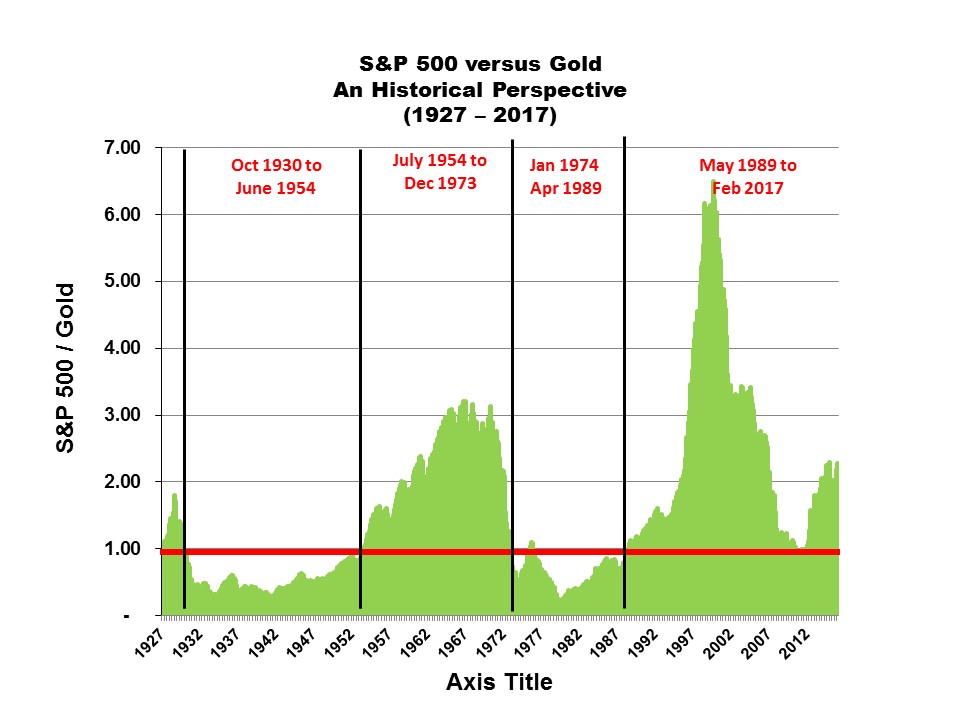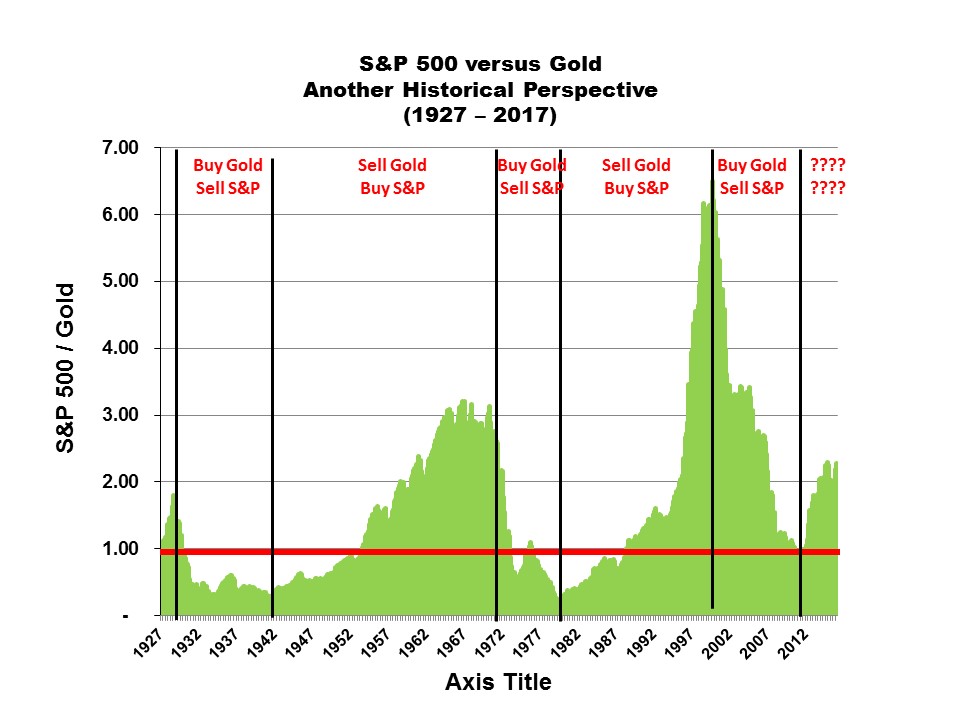Gold Versus The S&P 500 - Which Should You Buy?
Those of you that have followed my recent articles know that I like to look at history to analyze the present. Why, you might ask? Well, chalk it up to “old age” I guess. Having lived a mere 70-years or so, I somewhat recall or feel I have a good sense about the state of the economy at different times over my lifetime. Also, having listened to the stories from my parents, I also feel that I have a good feel for the times covering the Great Depression and World War II, too. With this knowledge at hand, I like to look at the history of financial indicators to see how the present plays out against my knowledge of the past.
So, with that said, I thought it might be worthwhile today to look at the history of Gold versus the S&P 500. After all, the relationship between these two financial indicators provides one with a good barometer to identify bullish and bearish trends. The following graph plots a 90-year history of Gold prices versus S&P prices using an index of 1927.

Indexing provides an interesting view and the above graph shows you the time periods where it seems the S&P was deemed more valuable than Gold (and vice versa) in comparison terms to the economic period from which I started the index (i.e., December 1927). And for those of you that have been following my recent articles, you will note that the four periods that I broke out above somewhat tie to the four “economic” periods that I discussed in those articles.
Even so, there is still a better way to segregate the above data if you are wondering whether to invest in Gold versus the S&P 500. Instead of segregating the data based upon whether the index is above 1.0 or below 1.0 in comparison to the December 1927 starting point, it is better to segregate the graph into periods where the slope of the index is going up and periods when the slope of the index is going down. The following graph does that for you.

Note that I have segregated the above history into six distinct groupings, including the last and present grouping covering 2012 – 2017. Note that I have identified the periods as either Buy Gold-Sell S&P or Sell Gold-Buy S&P—leaving the present period with question marks (????). Before I address our present period, let this old foagie give you his interpretation of the above exhibit.
- Period 1 (1929 – 1942)—In truth, the time to have been buying gold during this period only lasted from about Oct 1929 thru 1932. After the complete collapse of the economy over this short span, between 1932 – 1942 the relational change between gold and the S&P was somewhat neutral. This, by the way, for those of you too young to know, is the period called the Great Depression.
- Period 2 (1942 – 1972)—This is the period that many people say and believe (as a result of World War II) helped bring the United States out of the Great Depression and was the point when the U.S. began playing a dominant leadership role in the world economy. Note, like the prior period, the time to buy the S&P was between 1942 and 1965—from 1965 to 1972 the relational change between gold and the S&P was somewhat neutral. It probably is not a coincidence that this latter period (1965-1972) reflected a time when significant new social legislation was passed in Congress and the Vietnam War was building to a crescendo.
- Period 3 (1972 -1982)—This is the period I identified in earlier articles to be a time that the United States had to deal with the cost of the Vietnam War, abnormal energy price increases, the cost of new social programs, and industrial complacency. Although there was a short period around 1974 where the U.S. economy looked like it was going to recover, most of this period was a down period for the U.S.
- Period 4 (1982-2000)—Although this is a real growth period for the United States, investment in the stock market became almost giddish during this period—leading up to a “bubble”, which burst in 2000. I think if you look at the above graph again, you must wonder what we all were thinking back in 2000 before the bubble burst. At least I do.
- Period 5 (2000 – 2012)—This period really reflects two things: (1) a correction for the bubble burst of 2000 and the financial collapse leading to the Greatest Recession Since the Great Depression (sic) which began in 2008. This was an extremely good time to buy gold.
Okay, Jim—fine and dandy. But so what? What about the present period? I see you have left it with nothing but “question marks”. What good is history, if all you can leave me with is question marks in the present--leading to the future?
Well, here is my response to those reasonable questions.
The present and the near future is and will be a good time to invest in the S&P 500 and a good time to sell Gold. Based upon my knowledge of history and the current U.S. economy, I see good times ahead for the United States. And believe me this is not because we just elected a new President. In fact, I would have been even more bullish if we had a different President in office. I see the S&P/Gold relationship in the near future, using the type of measurement shown above, moving up into the 3.0-3.5 range. I believe that because: (1) the United States is the leader in the “new world economy” that I have described in earlier articles; and (2) the U.S. economy is on much firmer ground today than it has been over its history..
Now with that said, I would like to end with one caveat. Back in my younger days, my age group believed that you could not trust anyone over thirty-years of age. That is history, too. I am seventy now so take what I say for what you think it is worth. Time will tell whether I am right or wrong. The proof will be in the data. Believe me, in the few years I have left, I will still be watching.
Disclosure: No positions.



